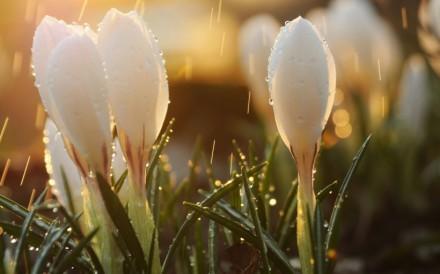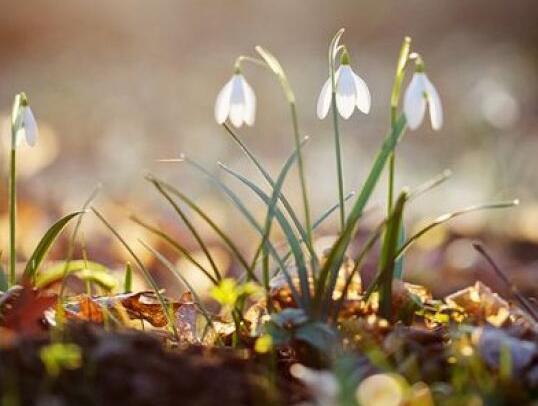
杜甫草堂的英文怎么写
叫Thatched Cottage
附你:四川-英文导游辞 Du Fu(712~770)Thatched Cottage used to be the former hone of Du Fu, one of the greatest poets in the Tang Dynasty. Located in the western suburbs of Chengdu, the spot is marked by a stream, ancient style architecture, pavilion pagodas and age -old trees. The cottage consists of six important parts, They are the Front Gate, the Lobby, the Hall of poem History, the Water Pavilion, the Gongbu Shrine and the Thatched Cottage. At the time of the Tang Dynasty, Du Fu's poetry first came to be recognized. Readers of many different periods have considered Du Fu to be the greatest poet of the Chinese tradition. Such general agreement can partially be explained by the immense variety of his work, which holds up quite well to different tastes and historical changes in fashion. Like Shakespeare in English tradition, Du Fu's poetry came to be so deeply bound up with the constitution of literary value that generation after generation of poets and critics rediscovered themselves and their interests in some aspect of the poet' Chinese critics from the Song Dynasty referred to Du Fu as thepoet-historian. Both before and after the An Lushan Revolt, Du Fu witnessed a typical political and social situation; the common people still lived in poverty while the emperor and his top officials enjoyed a foolishly luxurious life. He composed many poems such as Song of the War Chariots, Three Officials,and Three Departures。
His poems expressed his dissatisfaction with the government and his great pity for the common people. Du Fu used his poems to comment on current events and historical images. Du Fu became the historian by creating his responses to particular situations. Du Fu was talented. When he was young, he wanted to get a good job in the government. Unfortunately Du Fu was refused several times. He was in his fifties when he began to serve as a minor official in Changan (Xi'an). Gongbu was his official title and probably he was in charge of the lical industry. Du Fu was not a skilled survivor in government politics. He was dismissed in the form of a transfer to the post of personnel administrator in Huazhou and so left Changan. Du Fu soon gave up this minor post in disgust and set off with his family to Qinzhou in the Northwest. After a short stay he moved on again and in 759 he arrived in Chengdu. He set up a modest cottage with some money he borrowed from his friend who served as a local governor. In the cottage he had a simple and peaceful life for three years, writing about 240porms. Mostly inspired by the cottage, the stream nearby and the scenery in Chengdu. These poems give the impression that he was happier in Chengdu than any other time in his life. The poems of this period sound relaxed and happy. Here are some of them. In Chengdu the flutes and the strings You hear them so loud even in the daytime The melody fades in the river wind And half in the towering clouds above us Oh it should never be played here It belongs to the emperor's hraven We thank you for what is not ours But the emperor will be hearing it also Two yellow orioles sing in the tenser green willow A line of herons crosses the blue sky When you open the west-facing window The snow is framed in the summit of the mountain And the ships that will sail east for Dong Wu They lie at anchor in the sun-filled doorway A good rain knows its season It brings thins to life right in spring It enters the night, unseen with the breeze It moistens things gently and without sound Du Fu left Chrngdu after 762 and wandered in the southern provinces and eventually died of illness in 770. After his death, the people if Chrngdu built a shrine on the site of his garden to honor him. Since then, it brcame the custom to visit on the seventh day of the lunar month(around the middle of February). An ancient couplet still hangs on the top of the front door. It reads:锦江春风公占却,草堂人日我归来。
It was written by a scholar of the Qing Dynasty, whose name was He Shaoji. The couplet means that Du Fu owned the Jingjiang river and the spring breeze; on the seventh day of the first lunar month did I come to visit his cottage. The original cottage no longer exists and the buildings within the cottage compound. South west of the city, have been repaired and added to thirteen times since the eighth century. The Gongbu Shrine is at the center of the six important sites in the cottage compound……It is a small hall in the eastern section of the grounds, dedicated to the memory of Du Fu. It contains a statue of du fu flanked by ghose of two other poets; Huang Tingjian(1045-1105)on the right and Lu You (1125-1210)on the leftThesee two poets were both from the Song Dynasty and occupied an important place in the traditional Chinese literature history. Huang Ting jian, from Xiu Shui in which affected his official posts. Later when his opposition party was in power, he was dismissed from his major official post and banished to Yizhou. Huang was one of the followers of Su Shi. He sincerely studied Du Fu's poetry and intentionally car during theearly song Dynasty. Lu You, from Shaoxing in Zhejiang held a succession of mionor of ficial posts but was unable to affect any of the political reforms he advocated. Im 1172, he began to serve in the army on the Sichuan -Shaanxi border. It is known that sometime later he was dismissed from a post im jiangxi for distributing government grain to relieve famine. Lu You was a prolific poet and more than nine thousand poems have survived. Both Huang ting jian and Lu You are noted for their ardent patriotism. Here are some of their poems : Looking all round, a fine sight of hills and waters I found: Leaning on the Tower railing, I could enjoy what was sweet: The fragrance of water chestnuts and lotus stretching far The soft breeze and bright moon which were both Free and made tower cool ; (Huang tingjian, Tr, Guo Zhuzhang) Erect hedge and implant fence to shield and sustain these new bamboo, They are meticulously cultivated and their dark green color is reflected in ripples. The blowing of the cool breeze tells the early coming of autumn, And I am not aware of the blazing sun in the sky at such high noon. I hear the rustling sound when the sheath is shedding from the sprouts. And see the dense fluttering shadows of these newly grown young bamboos. Once I retire from my position, here will be the place to which I often come, And carry with me along a pillow and a mat that are made of bamboo. (Lu You, Tr. Cui Wenkai) In the traditional Chinese literature history, there were thousands of poets, Why were these two poets selected to accompany Du Fu ?there are three reasons:Firstly, they made greart achievements in studying Du Fu's poetry. Secondly, they used to live in Sichuan, and enjoyed their stay, thirdly, Du FU's statue might have been lonely in the gongbu Shrine without any accompaniment. so when people placed the statues together, they ghought that the three poets might have time to talk about their poetry. the Shrine of the Three Sages is named from the above -mentioned story. Inside the shrine are two valuable stone tablets from the Qing Dynasty, on which the whole picture of the thatched Cottage has been engraved. the tablets showus the design and development of the cottage dated bace to the Qing Dynasty. Also an other two stone tablets are in the shrine, which tell the story about the refurbishment of the cottage and the reason why Huang tingjian and Lu You's statues stay with Du Fu's. On left side of the Gongbu Shrine is a huge tablet placed in a straw -roofed pavilion. Prince Guo of the Qing Dynasty wrote the calligraphy on the tablet when he visited the cottage. A screen wall at the entrance to the Flowery Path is decorated with the characters Caotang(Thatched Cottage ) at old blue and white ceramic fragment. At present, du Fu's cottage is a museum. It has a rich collection of over 30000bound volumes, and 2000cultural relics, the bound volumes include thea ncient cut blocks photo-offset, hand -written, and modern stereotyped copies, the translation editions are in 15 languages. As you walk around the cottage, you will experience the traditional Chinese culture and literature characterized by Du Fu's poems.
世上疮痍诗中圣哲,民间疾苦笔底波澜
杜甫 “草堂留后世,诗圣著千秋”是同志参观时的题词;“世上疮痍诗中圣哲,民间疾苦笔底波澜”是先生撰写的对联。
在成都的诗史堂,可以见到这两幅对联。
同志撰写的对联道出了杜甫和他的故居草堂在人们心目中崇高而不朽的地位。
先生的对联高度概括了杜甫的两个方面,内容深刻,对仗工稳,书法潇洒而富激情,历来为世人所推崇。
关于“乐府“诗的文学常识.
杜甫草堂导游 各位游客,大家好!来到杜甫草 杜甫草堂位于市西门外浣花溪畔的杜甫草堂,游览前小钟先给大家说几点注意事项:1.游览时,请大家爱护景区环境卫生,不要乱扔果皮纸屑。
2..请大家牢记我的手机号码,进入景区后要紧跟着我,不要走失,下午五点我们在此集合登车。
下面我们游览的顺序是照壁,正门,大廨,诗史堂,柴门,工部祠和茅屋,时间大约两个小时。
好了,现在就请大家随我一起去参观。
杜甫草堂是我国唐代大诗人杜甫流寓成都时的居所,杜甫在此居住了近四年,创作了大量脍炙人口的诗歌,流传至今的有240余首。
草堂原先占地一亩,在杜甫离开后一度衰败,唐末时,韦庄在旧址上重建草堂,后来经历代多次培修,到清嘉靖十六年重建完成时,基本奠定了今天的规模。
重建后的草堂有着自己的特色,它是一处集祠堂格局和诗人旧居风格为一体,建筑古朴典雅,环境清幽的著名文化圣地,1957年,朱德总司令游览草堂时用“草堂留后世,诗圣著千秋”的诗句评价了草堂的历史地位。
关于杜甫草堂的传说还有很多,由于时间的关系,今天我就不给大家一一讲述了
大家请跟上我的脚步,不要掉队哦。
各位游客,现在我们所在的地方就是大廨了,大廨是草堂中轴线上第二重建筑,为什么叫大廨呢
原来,廨是古代官员办公的地方,由于杜甫曾做过左拾遗,检校工部员外郎,后人为了表达对他老人家的尊崇之情,便将这重建筑命名为大廨,从这里也可以看出,草堂的每一处建筑都体现了后人对这位大诗人的尊敬与爱戴。
现在大家请看安放于大廨厅中央的这尊杜甫的塑像,但为什么它会如此清瘦呢
它要向我们暗示些什么呢
且听我慢慢道来,这尊塑像是出自于中央美术学院钱绍武教授之手,铜像呈跪姿,身材精瘦,采用较为抽象和夸张的艺术造型,表现了诗人饱经忧患和他忧国忧民的情怀。
请大家仔细看这尊塑像的神态,低首捋须,沉思苦吟,让我们将时光倒流到一千二百多年前,诗人正漂泊江河之上,他跪立船头,手扶诗卷,头部微仰,双眉紧蹙,仿佛在向苍天发出“乾坤满疮痍,忧虞何时毕”的悲怆感叹。
这一尊感人至深的塑像,不但外观极为传神,内涵也无比厚重。
杜甫生活在唐王朝由胜转衰的转折时期,经历了玄宗,肃宗,代宗三朝,他具有“至君尧舜上”的远大政治抱负,但却始终得不到重用,一生颠沛流离,饱经忧患,在他的绝笔诗《风疾舟中伏枕书怀》中,他除了回顾自己不堪回首的一生之外,依旧是对国家前途的忧心。
“战血依流旧,军声动至今”他对他所忠诚的国家如此牵挂,然而他爱国家,国家却不爱他,他的一生就像空旷的午夜划过天空的流星,耗尽了生命才获得了一次耀眼的闪亮,这位星空下的寂寞老人,除了给我们留下那些气雄天下忧国忧民的诗歌之外,就是我们脚下的草堂了,他老人家忧国忧民的情怀也唤起了历朝历代文人墨客们的共鸣,大廨前有一幅对联便是清代学者顾复初游览草堂时书写的,那么这位顾先生要向他的杜老前辈说些什么肺腑之言呢
冰雪大世界好玩么
冰雪大世界虽然说好玩,但是经常会有重复的活动,而且因为现在天气变暖的原因,冰雪大世界的冰雕和雪雕已经化了,很容易砸倒人,所以最好不要再这时候去



